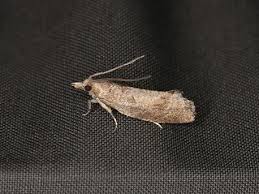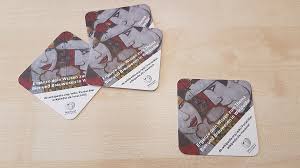Sustainability has become one of the most pressing concerns of our era, and even the smallest products are now designed with environmental responsibility in mind. Among these eco-friendly solutions is the pappedeckel, a small cardboard lid with a surprisingly large impact. Though modest in appearance, this product demonstrates how thoughtful design can reduce plastic waste while offering convenience and functionality. From food packaging to arts and crafts, pappedeckel proves that eco-conscious alternatives can be both practical and versatile.
What is Pappedeckel?
The term pappedeckel refers to a small cardboard lid typically used to cover cups, jars, and containers. Lightweight but durable, it helps maintain freshness, prevents contamination, and reduces reliance on single-use plastics. The simplicity of pappedeckel masks its importance: by offering businesses and consumers a sustainable option, it plays a key role in the growing movement toward greener packaging solutions. Available in various shapes and sizes, it adapts easily to different industries, from cafes to artisanal workshops.
The History and Origins of Pappedeckel
The pappedeckel has its origins in Germany, where demand for sustainable packaging alternatives was growing during the late 20th century. Plastic lids were convenient, but they contributed significantly to global waste. The introduction of pappedeckel marked a turning point. It combined functionality with eco-friendliness, offering businesses a way to meet packaging needs without harming the planet. Its popularity spread quickly across Europe as consumers became increasingly aware of environmental issues. Today, pappedeckel is a symbol of innovation, blending tradition, utility, and responsibility.

Materials Used in Pappedeckel
A major reason for the eco-friendly nature of pappedeckel is its material composition. Most lids are crafted from high-quality cardboard, often sourced from recycled fibers. This ensures not only durability but also a reduced environmental footprint. In food-related applications, manufacturers sometimes add biodegradable coatings or natural inks to enhance safety and functionality. These materials ensure that pappedeckel maintains structural strength while remaining compostable and recyclable. Its material choice reflects a perfect balance between environmental awareness and practical use.
Common Uses of Pappedeckel
The applications of pappedeckel are diverse. In the food industry, it serves as a reliable lid for takeout cups, jars of sauces, or artisanal snacks. It protects contents during storage and transportation while reducing plastic use. Beyond packaging, pappedeckel has gained popularity in creative fields. DIY enthusiasts often use it for art projects, party decorations, or craft bases. Its lightweight, customizable structure makes it ideal for creative expression. Whether in restaurants, small businesses, or homes, pappedeckel has proven to be remarkably versatile.
Pappedeckel in the Food and Beverage Industry
Among its many uses, pappedeckel has found a particularly strong foothold in the food and beverage industry. Cafes and restaurants increasingly rely on these lids for eco-conscious packaging, especially for takeaway items. They ensure freshness, prevent spillage, and serve as a canvas for branding. Businesses can print logos or designs on pappedeckel, turning them into marketing tools while simultaneously reducing plastic waste. As consumers demand sustainable dining options, pappedeckel has become essential for forward-thinking food businesses.
Benefits of Pappedeckel
The benefits of using pappedeckel extend beyond simple functionality. It offers:
- Eco-friendliness – Made from renewable resources, pappedeckel is biodegradable and recyclable.
- Lightweight convenience – Its small size and light material make it easy to transport and store.
- Cost savings – Reduced shipping weight lowers transportation costs.
- Versatility – Suitable for food packaging, crafts, and more.
- Customization – Businesses can design unique lids for branding or decorative purposes.
These benefits make pappedeckel appealing to both businesses seeking eco-friendly solutions and consumers looking for sustainable everyday products.
Environmental Impact of Pappedeckel
The environmental value of pappedeckel cannot be overstated. Unlike plastic lids, which can linger in landfills for centuries, cardboard lids naturally decompose. They also require fewer resources to produce and can be recycled multiple times. By switching to pappedeckel, businesses significantly reduce their carbon footprint. For consumers, choosing pappedeckel represents a small but meaningful contribution to global waste reduction efforts. Its impact proves that sustainable design does not need to be complex—it can start with something as simple as a cardboard lid.
Creative Uses of Pappedeckel
Beyond its practical functions, pappedeckel inspires creativity. Craft lovers transform these small cardboard lids into decorative coasters, wedding place cards, or even miniature canvases for painting. Event planners incorporate them into eco-friendly décor, while schools use them in art projects to teach children about recycling and sustainability. With just a bit of imagination, the pappedeckel transcends its original purpose, becoming an accessible tool for artistic expression.
Manufacturing Process of Pappedeckel
Producing pappedeckel involves a precise yet eco-conscious process. First, manufacturers source sustainable cardboard, often made from recycled fibers. The cardboard is then cut into specific shapes and sizes depending on customer requirements. In some cases, natural coatings or biodegradable adhesives are applied to improve durability, especially for food-related uses. Finally, machines shape the lids, ensuring uniformity and quality. This streamlined process highlights how innovation and sustainability can coexist in modern manufacturing.
Recycling and Sustainability of Pappedeckel
One of the strongest selling points of pappedeckel is its recyclability. After use, these lids can be disposed of in paper recycling streams, ensuring they reenter the production cycle. Unlike plastic, which contributes heavily to pollution, cardboard returns to the environment safely. Many manufacturers also emphasize responsible sourcing, using FSC-certified cardboard and eco-friendly inks. This makes pappedeckel not only a practical solution but also a sustainable one that supports circular economy principles.
Buying Guide for Pappedeckel
For businesses or individuals interested in purchasing pappedeckel, several factors should be considered. First, choose the correct size and shape for your containers. Next, prioritize eco-friendly options that use recyclable materials and biodegradable coatings. Customization is also worth exploring, as branded lids can enhance your business’s image. Lastly, compare prices across suppliers to ensure a balance between cost and quality. With careful selection, buyers can maximize both sustainability and practicality.
Popular Designs and Trends in Pappedeckel
The pappedeckel is evolving beyond a simple lid into a design element. Minimalist styles featuring neutral tones are trending, appealing to modern consumers who value simplicity. At the same time, bold, colorful prints are becoming popular for businesses aiming to stand out. Branding has become central, with custom-printed pappedeckel serving as mini billboards. Sustainability trends also influence design, with biodegradable inks and recycled materials being key choices. These innovations demonstrate how eco-friendly products can also be stylish and marketable.
Pappedeckel in Different Cultures
Cultural practices have embraced pappedeckel in unique ways. In Germany, it is often used to seal homemade preserves, adding both freshness and charm. In Asian markets, cardboard lids frequently accompany artisanal teas and spices, where eco-consciousness is highly valued. In Western countries, the rise of artisanal coffee culture has made pappedeckel popular in cafes. This cross-cultural adoption highlights its universal appeal as both a functional and sustainable product.
The Versatility of Pappedeckel
The greatest strength of pappedeckel lies in its versatility. It is equally useful for global businesses seeking to minimize plastic waste and for individuals looking for affordable craft supplies. Its adaptability across industries ensures it remains relevant in an eco-conscious marketplace. Whether sealing food containers, decorating events, or serving as an art base, pappedeckel consistently delivers functionality with sustainability. Its continued popularity proves that sometimes the smallest innovations make the biggest impact.
Conclusion
The pappedeckel may seem like a simple cardboard lid, but its role in promoting sustainability is far from small. By offering a biodegradable, recyclable, and customizable alternative to plastic lids, it aligns perfectly with today’s eco-conscious values. Its applications in food packaging, creative projects, and cultural practices demonstrate versatility and widespread appeal. As trends in design and sustainability continue to grow, pappedeckel will remain an essential tool in reducing waste and encouraging eco-friendly living. From businesses to everyday consumers, adopting pappedeckel represents a commitment to a healthier planet and a more responsible future.




